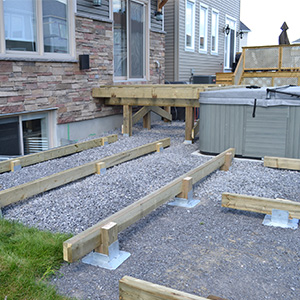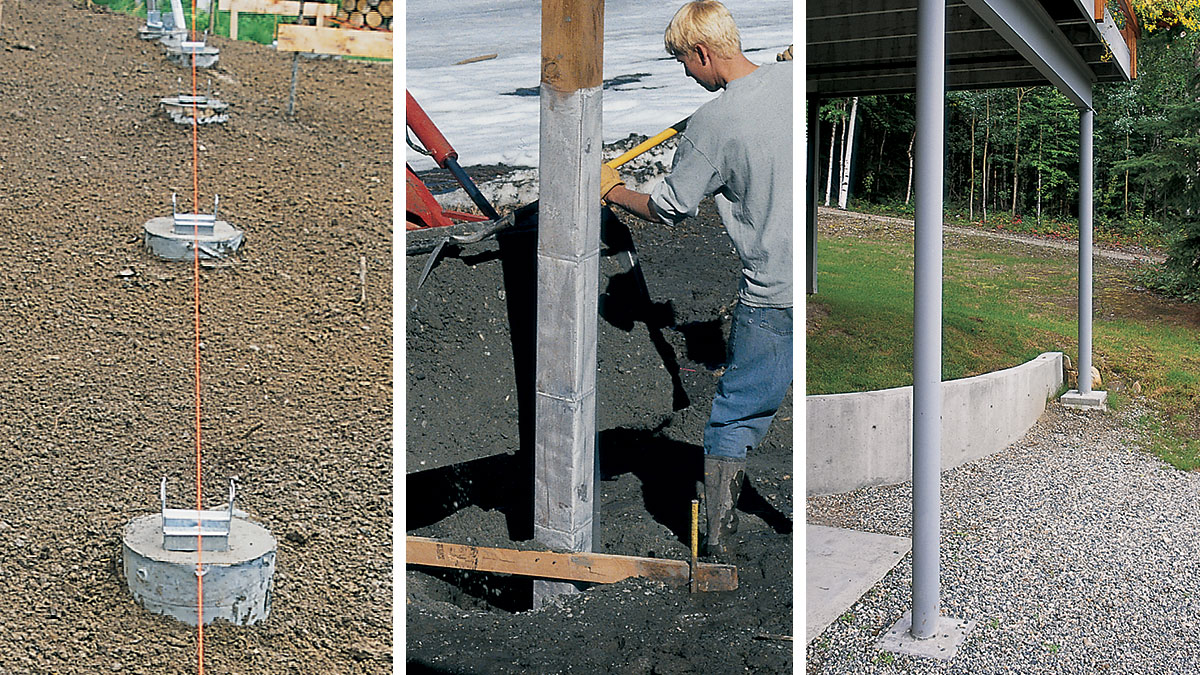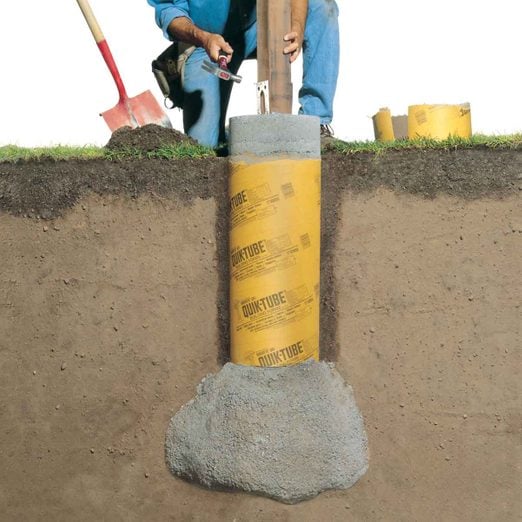A Solid Structure for Your Sanctuary: Exploring the Importance of Deck Footings in Outdoor Structures
A Solid Structure for Your Sanctuary: Exploring the Importance of Deck Footings in Outdoor Structures
Blog Article
Professional Tips for Putting Up Deck Footings to Support Your Outdoor Space
When it comes to building a deck, one of the most essential elements to consider is the installment of appropriate footings. These grounds are the foundation upon which your outdoor room will rest, giving stability and support for years to come. What specifically does it take to install deck grounds properly?
Importance of Correct Deck Footings
Proper deck footings are crucial for making sure the security and longevity of your outdoor area. Without solid and properly set up grounds, your deck might become unsteady, leading to safety dangers and costly repair services.

Along with security, correct deck footings also add to the longevity of your outside area (Deck Footings). Footings that are created and built to endure the components and dirt problems in your location will certainly aid protect against the deck from changing or settling over time. By guaranteeing the footings are properly sized and installed, you can minimize the risk of damages to the deck framework, prolonging its life expectancy and minimizing the requirement for expensive repair work or replacements

Choosing the Right Kind Of Footings
When picking the appropriate kind of footings for your deck, it is very important to take into consideration factors such as soil conditions, local building regulations, and the overall design of your outdoor room. The kind of footing you select will play a vital function in making sure the security and durability of your deck.
One usual kind of ground is the concrete ground. Concrete footings are appropriate for the majority of dirt problems and supply exceptional assistance for decks.
Sometimes, you may need to use customized grounds, such as stack footings or deep foundations, if you are building a multi-level or huge deck. These grounds are created to distribute the weight of the deck over a larger location, making certain security and avoiding sinking or working out.
Before picking a kind of footing, it is essential to consult neighborhood building regulations and policies to ensure compliance. In addition, think about the design and planned usage of your outdoor room. Aspects such as the size, form, and load-bearing demands of your deck will certainly influence the sort of footing that is most ideal.
Preparing the Ground for Footing Installation
To properly prepare the ground for footing setup, it is necessary to analyze the soil problems and take needed actions to make certain security and resilience of the deck. The first step is to dig deep into the area where the grounds will be set up. The deepness of the excavation will depend upon the frost line in your area and the particular needs of the deck style. It is crucial to eliminate any kind of greenery, rocks, or particles from the excavation to ensure a solid structure.
When the location has actually been dug deep into, the following step is to compact the soil. This can be done utilizing a plate compactor or by utilizing a hand meddle. Condensing the soil helps to remove any kind of gaps or air pockets, which can result in settling and instability over time.
After condensing the dirt, it is vital to lay a layer of crushed rock or smashed rock at the base of the excavation. This will certainly provide drainage useful content and help to avoid water from pooling around the footings, which can lead to erosion and instability.
Step-by-Step Overview to Putting Up Deck Footings
After effectively preparing the ground for footing installment, the following action is to begin the process of installing deck footings. This detailed overview will offer you with a clear understanding of how to install deck grounds for your exterior area.
Figure out the place: Start by marking the placements of the deck grounds utilizing stakes and go to these guys string. Make sure that the places line up with the design and format of your deck.
Dig the openings: Utilize a post opening miner or an auger to dig the holes for the grounds. The deepness and diameter of the openings ought to be in accordance with neighborhood building ordinance and the particular needs of your deck layout.
Level the openings: Utilize a level to make certain that the holes are dug to the correct depth and are level with each various other. (Deck Footings)
Add crushed rock: Area a layer of crushed rock at the end of each opening to enhance drainage and prevent the wood from decaying.
Place the grounds: Position the footings into the holes, making sure they are degree and plumb. Utilize a degree and a measuring tape to make sure accuracy.
Protect the footings: Pour concrete right into the holes around the grounds, filling them to the top. Utilize a post level to ensure the footings continue to be level as the concrete sets.
Permit time for curing: Allow the concrete treatment according to the producer's guidelines before waging the deck construction.
Typical Blunders to Avoid During Footing Installment
One important element to take into consideration during the setup of deck grounds is staying clear of typical mistakes that can compromise description the stability and long life of your exterior space. While deck footings may look like a simple and straightforward component of the construction procedure, overlooking specific aspects can lead to costly repair services and possible safety and security hazards down the line.

In addition, disregarding to mount correct drain procedures can trigger water to build up around the footings, leading to rot, degeneration, and the ultimate weakening of the deck's foundation. Additionally, making use of the incorrect sort of footing material or failing to properly secure the grounds can jeopardize their structural honesty.
To prevent these mistakes, it is necessary to seek advice from a professional or adhere to market guidelines to make sure appropriate ground setup. By doing so, you can ensure the security and longevity of your outside space, supplying a safe and delightful atmosphere for years to find.
Verdict
To conclude, mounting proper deck grounds is essential for the security and longevity of your outside room. By choosing the ideal kind of footings and effectively preparing the ground, you can ensure a solid structure for your deck. Following a step-by-step overview and staying clear of common errors throughout footing installation will certainly further boost the resilience and security of your deck.
Correct deck footings are vital for making certain the security and longevity of your outdoor area. The grounds offer as a link in between the ground and the deck, allowing the weight of the deck and its owners to be dispersed equally right into the soil.One common kind of ground is the concrete ground. Put the footings: Place the footings right into the openings, making certain they are degree and plumb. Secure the footings: Pour concrete into the openings around the grounds, loading them to the top.
Report this page